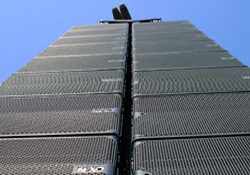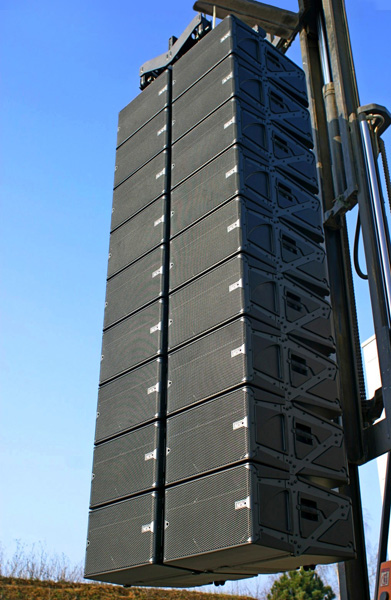At Prolight+Sound in Frankfurt last March, NEXO revealed its concept for a new modular-design high-end loudspeaker series called STM. Just prior to the show, I paid a visit to the French manufacturer at its Paris headquarters to get the full low-down the new system.
The STM (Scale Through Modularity) project actually got underway more than two years ago when NEXO decided to replace the popular GEO T Series line array (launched in 2002) and build a “next generation” system. In a nutshell, the concept enables line arrays to scale up or down depending on event audience size, ranging from 1,000 to 100,000 people.
“We were determined not to create just another line array,” R&D director Francois Deffarges told me. “We certainly didn’t want it to be a stadium-only system, but rather, useable for business in arenas in the winter time as well as a range of smaller venues for different live applications, which is ultimately what led us down the modular route.”
STM arrays can be configured from four discrete loudspeaker elements with the same cabinet width: M46 main, B112 bass, S118 subbass, and M28 “Omni” modules. Configurations can comprise arrays of main cabinets only, or main plus bass, or bass plus main plus bass.
The ability to add extra bass cabinets to the system in order to increase power and headroom without introducing phase anomalies translates to vertical arrays that offer scalable low-frequency flexibility.
In The Boxes
The M46 main cabinet offers drivers with flat membranes, which the company says helps produce very even full-range coverage over the entire 90-degree horizontal dispersion. HF frequency range is designed to stay completely linear using Kepton Polymer diaphragms that enhance tonal response and long throw.
The M46 includes 4 x 6.5-inch LF/MF drivers and 4 x 2.5-inch voice coil neodymium HF compression drivers. Published peak SPL is 145 dB, and frequency response is 85 Hz – 20 kHz. The cabinet measures 13.8 (h) x 22.6 (w) x 28.2 (d) inches, and weighs 121 pounds.
The B112 bass cabinet is outfitted with a neodymium high-excursion 12-inch bass driver with 4-inch voice coil and shares the same dimensions, weight, and gravity center as the M46. The hybrid horn-loaded design maximizes the efficiency of the driver, delivering 6 dB more than a standard front-loaded driver in this frequency range.
With a 1 x 3,000-watt, +/- 3 cm excursion 12-inch LF driver, the B112 has a 141 dB peak SPL and a frequency response of 63 Hz – 200 Hz. It has the same dimensions and weight as the M46.
The S118 subbass cabinet has a neodymium high-excursion 3,000-watt 18-inch driver. A bandpass load was incorporated to help provide output equivalent to conventional dual 18-inch units. Peak SPL is stated as 143 dB, and frequency response is 25 Hz – 85 Hz.
The S118 measures 27.6 x 22.6 and 28.2 inches, and weighs 187 pounds. It can be flown in the array or groundstacked in line and can run in omnidirectional or cardioid sub mode.
The M28 Omni cabinet is used for down fill and provides 120 degrees of horizontal dispersion and 0 to 15 degrees splaying angle between modules. The cabinet is loaded with 2 x 8 inch LF drivers, 4 x 4 inch MF drivers, 1 x HF compression driver, with a 140 dB peak SPL and frequency response of 60 Hz – 20 kHz.
The Omni cabinet measures 13.8 x 22.6 and 28.2 inches and weighs 84 pounds. And, it should be pointed out that it can also be used independently from the M46 or B112.























